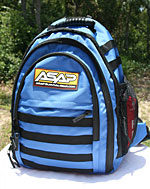Social unrest, terrorist attacks, and natural disasters are constantly in the news. People have seen that the normal systems of support break down in these events, and simple things like food and water may not be readily obtainable. Preparing for possible problems only makes sense. But how do you prepare? And, for what?
Enter the ASAP survival packs.
Mossberg decided to offer a starting place for preparation by building a line of ready-to-go bug out bags (BOB). The concept of a BOB is simple: a lightweight pack holding enough supplies to sustain you through a short term emergency as you evacuate to a safe location. Think of it as the “ready to go” thing you grab when a firefighter knocks on your door and tells you to immediately evacuate due to a nearby chemical fire. You don’t have time to go gather things; you have to go right now.
What is stored in a BOB is a hugely personal decision that is a frequent topic of conversation on forums like Jack Spirko’s The Survival Podcast forum. Certain things, like a first aid kit, are obvious choices. But what about food? hand warmers? bug spray? knives? a folding shovel?
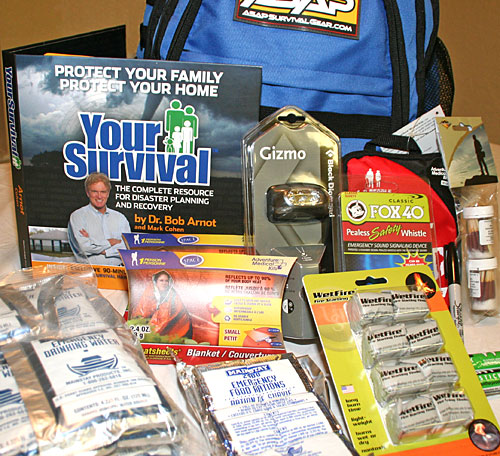
ASAP approached the problem by offering several different “basic” bags. Each bag has the basics for the stated need. ASAP then offers supplemental kits to add into your bag depending on your needs. The additional modules contain gear for specific situations like child or pet car, or winter survival.
The ASAP Sidekick is the smallest kit in the line. The Sidekick is marketed as a one or two person, 24-hour bag. It is very basic, but has most of the things you might need in a short term crisis situation. Without adding any components to the kit, I see the Sidekick as being a really good “get home” bag. In other words, something you would have in the car or at the office to help you get home in the event of a crisis when you are away from your residence.
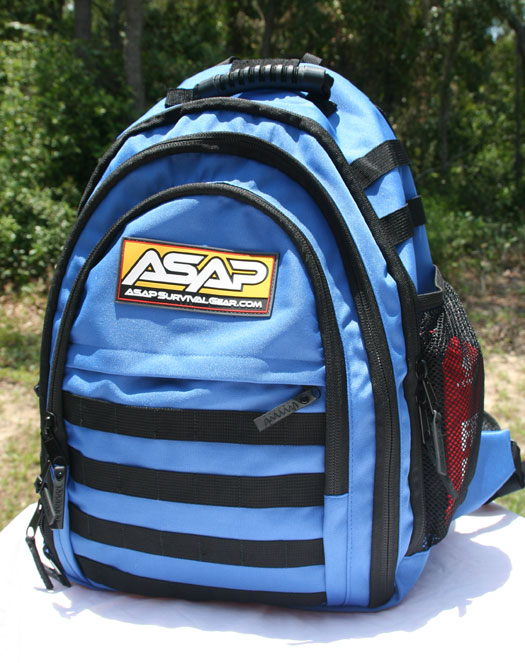
The Sidekick is small enough to be stored out-of-the way in virtually any car, and certainly wouldn’t be noticed in a closet around the house. It’s probably a bit big for hiding under a small desk at work, but could be kept in a cubicle-style work environment without much problem.
A Closer Look
For this ASAP Survival Pack review, I’ve listed the complete contents of the bag below, but I want to go over some of the items in greater detail.
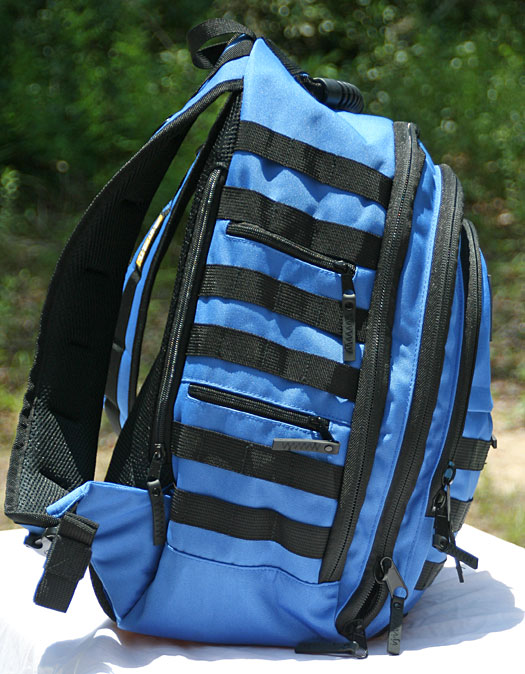
Adventure Medical Kits First Aid– This is a very basic first aid kit designed to address mostly minor cuts and scrapes. Included in the kit are four tablets of ibuprofen, four tablets of acetaminophen, and two tablets of aspirin. These would obviously help with aches and pains associated with walking a long distance. The aspirin also can be used for other first aid purposes.
Other things included in the kit are one tablet of antihistamine, two packets of insect bite relief, an Ace-type elastic bandage, two packets of triple antibiotic ointment, a whistle, a compass, small tweezers, ten packets of antiseptic wipes, a roll of cloth tape, several gauze sponges (2×2 and 3×3), and bandages of various sizes.
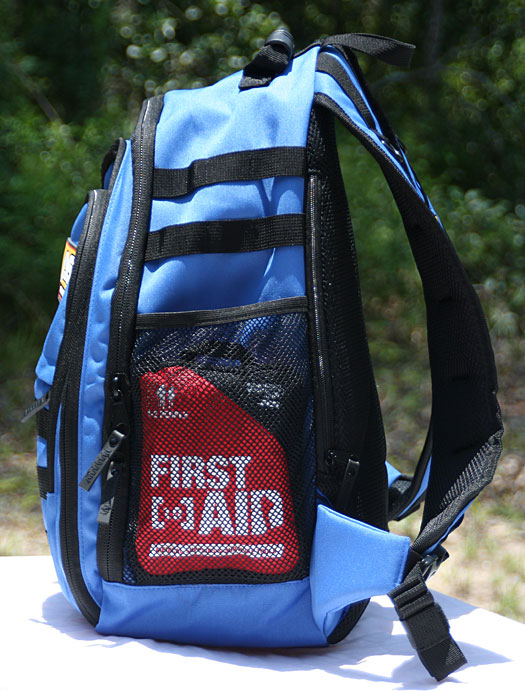
As a starting point, the first aid kit isn’t bad. However, looking at some of the expiration dates, I was dismayed to see that some of the medicines provided expire in less than a year. Additionally, the kit was missing one of the 2×2 and one of the 3×3 gauze sponges.
Mainstay food and water – In a survival situation, water is one of the most important resources you need. The Sidekick includes 12, 4.225 fluid ounce (125 ml) sealed packages of water. This allows you to hand out individual servings of water to others, avoid contamination of the entire water supply, and to also see exactly how much water you still have on hand. The water packs are US Coast Guard approved. For this ASAP Survival Pack review, I think that the water included is an absolute minimum needed. I’d feel better with double the included amount.
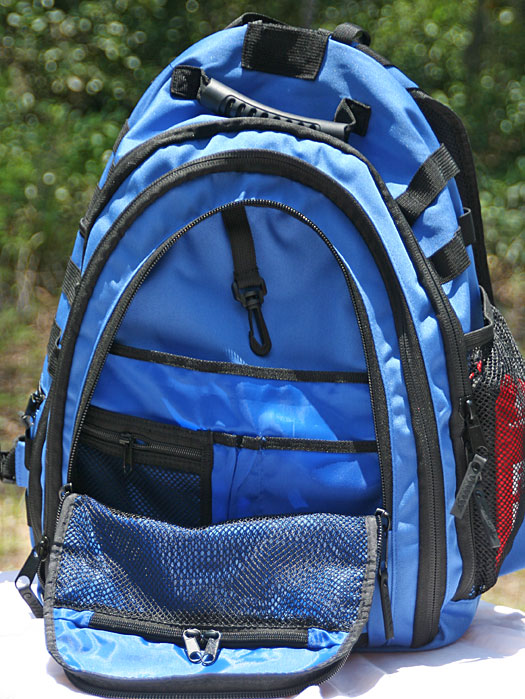
The food rations are six, 400 calorie bars with a five year shelf life. The bars included in my kit were packaged in February, giving me almost a full five years of storage for these bars. The bars are enriched with various vitamins and minerals.
I know what you’re thinking… “What do they taste like?” Believe it or not, they taste ok. They have a light lemon taste, sort of like a mild lemon pudding flavor. The bars are dry and crumble easily, so make sure you have one of the water packs ready.
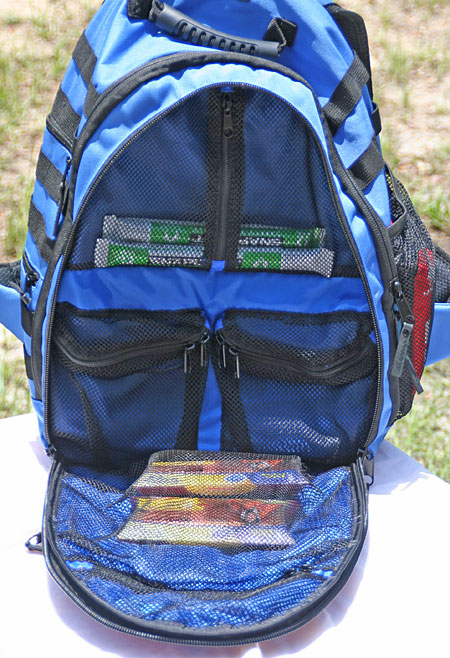
The only real problem with the food bars are they are all packaged in one sealed bag. This means when you open the bag, you will have to take care to make sure that you protect the other bars from dirt, water, etc. until you are ready to eat them.
Running an informal test on one of the bars, I fully immersed one in a dish of water for about 60 seconds. The water did not seem to penetrate the outer layers of the bar, and the bar would not crumble. So, even if you get the bars a little wet, they may stay together to get you through the crisis.
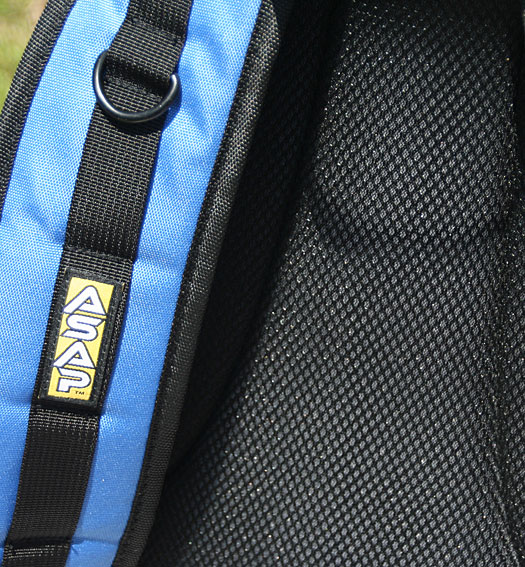
The bag – I don’t know who makes these packs for ASAP, but the Sidekick bag is a very good, light- to medium-duty backpack. It has a large main compartment with a padded dividing compartment and a mesh, zippered compartment. There are three additional compartments with various dividers and storage areas.
The lower front, and sides of the pack have molle-style webbing for adding any additional pouches you may have. The bag has a hard rubber carry handle.
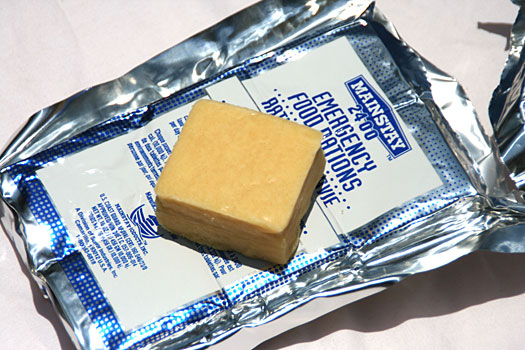
The shoulder straps are well padded and comfortable. The pack does not have a waist strap, which would have been nice. The back of the pack is padded and covered with mesh for good airflow. I carried the bag on several three-mile hikes. The bag was easy to carry and comfortable to wear.
After loading all of the gear into the bag, there was still ample room to add plenty of more stuff.
Video and book – The pack comes with a DVD video and a planning book. I found the video to be only mildly interesting, but would have been good for someone who has not given any real thought to survival planning. The host on the video is a media personality, not a survival expert, but he interviews several people that shed light into disaster prep.
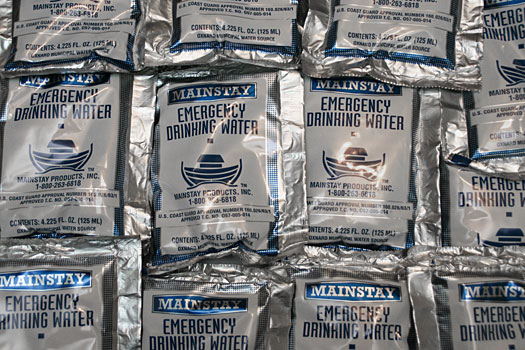
The book is not a comprehensive “how to” for preparing or surviving a disaster. Rather, the book is a first step book designed to get you started toward the ability to take care of yourself when systems of support have disappeared. The book is nicely done.
Total Contents
- Your Survival – The Complete Resource for Disaster Planning and Recovery by Dr. Bob Arnot (book and DVD)
- 12 emergency drinking water packets (4.2 oz each) by Mainstay
- 6 Emergency food rations (each a 400-calorie meal) by Mainstay
- 1 “Gizmo” headlamp by Black Diamond
- 1 First-aid kit by AMK
- 2 Emergency blankets by AMK
- Wind & waterproof matches with case
- 8 Wet fire tinder cubes
- 1 Fox 40 pea-less whistle
- 2 Cyalume lightsticks (8-12 hrs each)
- 1 Sharpie
Kit Price vs. Assembling Your Own
One of the possible problems I had with the Sidekick was price. The cost of the pack and gear is $129, and I thought that the gear in this pack could be assembled for a lot less. Well, I set out to re-create the gear in the pack over at Amazon. Since all of the included survival gear is off-the-shelf purchases, I was able to closely duplicate the exact contents. However, I wasn’t able to beat the ASAP price.
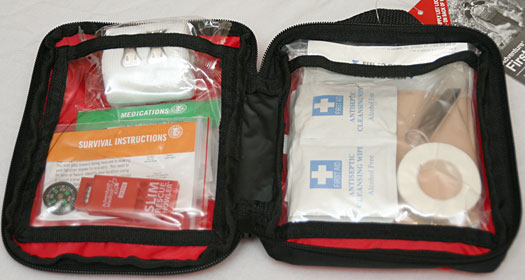
Not including the shipping charges, I was able to put together the same gear in the bag for $117.92. With shipping, the total cost would have been closer to $150. For that price, I would have gotten slightly more gear buying separately (nine Mainstay bars, instead of six, ten Snaplights instead of two, and five Sharpie markers instead of one), but I could not beat the price of the kit.
Also, the above component pricing does not include the cost of the DVD, book, or even the backpack itself. Cheap packs with similar features start around $25 and go up from there. So, I think the $129 price tag is reasonable.
Conclusion
The ASAP Sidekick is a good basic bug out bag. For the average person, it is likely to provide what they need for a very short term movement in a crisis. Adding a multi-tool and local maps would be the obvious addition in my mind.
If you are a hard-core prepper, you are not likely to be happy with the Sidekick…or at least not in its current configuration. There are all sorts of things you would want to add (upgraded first aid kit, paracord, knives, etc.) But, for most everyone else, it is a great “just in case” bag to keep in the car or office.
If there is one thing that I would add to any survival kit it would be a personal locator beacon. One of these devices can help rescuers find you even if you are in a very remote location or on the open sea.
Also, if you are looking for other cool survival equipment, check out this page.
Disclosure
GunsHolstersAndGear.com is an independent, for-profit website. I do not charge readers a dime to access the information I provide.
Some of the links on this page and site are affiliate links to companies like Amazon and Palmetto State Armory. These links take you to the products mentioned in the article. Should you decide to purchase something from one of those companies, I make a small commission.
The links do not change your purchase price. I do not get to see what any individual purchases.
